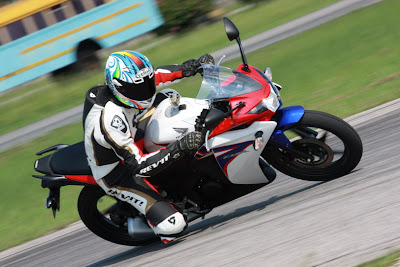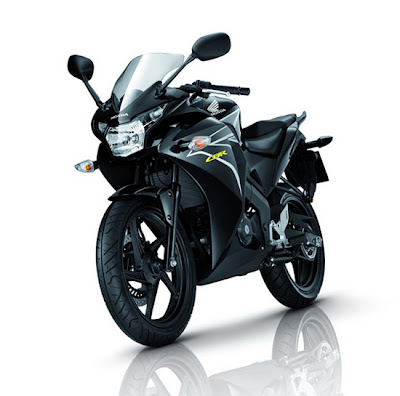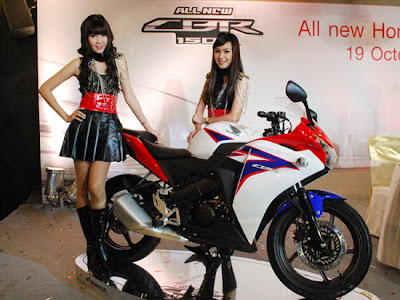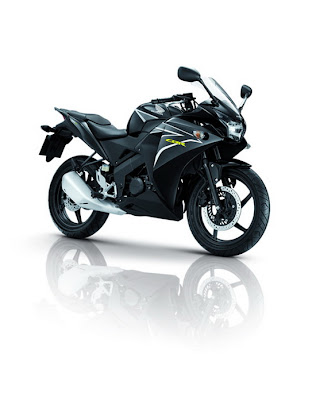




Hero Honda Karizma Fi Mileage Zmr PGM, and average fuel economy
Hero Honda Karizma ZMR gives an average mileage of 40 kmpl in urban areas while it will be a little more on the highway. Fuel tank capacity is 15 liters of Karizma ZMR. On the other hand, Hero Honda Karizma Fi ZMR PGM PGM Fi for better mileage by PGM Fi technology. It would be about 45 kmpl in city and around 51 on the highway. Fuel tank capacity has increased to 2.5 liters 1 liter reserve.
Hero Honda Karizma Fi Zmr PGM Pick up
The number of R Karizma acceleration is excellent. It can reach 00-60 kmph in just 4.5 seconds, while it takes 14 seconds to touch 000 to 100 kmph. On the other hand, Hero Honda Karizma ZMR Zmr PGM Fi takes 19 seconds to chase 000 to 400 kmph. The maximum speed of the car is 125.6 kmph. The Hero Honda Karizma ZMR Zmr PGM PGM Fi Fi demonstrated better performance options for many as it reached 00-60 kmph sprint in just 3.70 seconds. Maximum speed is 126 kmph. Fuel injection technology programs to ensure better results compared to carburetors.
The color of Hero Honda Karizma Zmr PGM Fi
Hero Honda Karizma ZMR Zmr PGM Fi is available in sporting red, yellow moons and black with red alloys, silver and blue army Vibrant. The body color painted front mudguard, fuel tank, side panel. New Karizma ZMR PGM Fi is attractive shades like bright blue, pearl white, sporting a red, black newspapers and the yellow moon. Color body side panels, ventilated front shot, airscoops and front mudguard. However, for rail and mirror post is not body color. Red ball is in the rear shockers ZMR red sticker in the body colors of black and white.
Hero Honda Karizma Zmr PGM Fi Looks
As far as looks are concerned, the bike seems to be both athletic and attractive. Although a full front fairing, paste and bold rear disc brakes make a big difference between R and Karizma Karizma ZMR PGM Fi. The mask is larger than the new Karizma. The rear view mirror mounted on the new Karizma mask while it is mounted on the steering wheel in Karizma ZMR. One more difference is in finding the rails. New Karizma has split rails against the bar to take in the handling of his predecessor. Mask shape also comes in different ways, the new Karizma. Now, some cosmetics often they share as mounted front turn indicators, silencers, halogen headlamps, large windshield and tail. Hero Honda Karizma Fi Zmr PGM own copy mounted rear view mirrors and turn indicators on the Yamaha R airscoops Bajaj Pulsar instrument panels 15 and 220.The Karizma ZMR has rated fuel tripmeter twins and same format and digital self in digital mode. Light yellow background of the interface is clearly visible in daylight. Dashboard tool also includes the total distance and real-time digital clock. Both cars have dual colors in the console, just tachometer is illuminated in white while the rest were treated orange. Three shells dial, including speedometer, tachometer and tripmeter, while the new Karizma Karizma ZMR has completed the digital cluster. Dashboard of new Karizma in digital mode in full. Tachometer white background lighting while the rest are in shades of orange. Body color with some graphics in both machines. Fuel tank, rear and side panel airscoops stuck. Hero Honda Karizma ZMR Zmr PGM Fi sports a bold logo and Sports 'R' on the tank. On the other hand, the new Karizma Fi ZMR PGM sports style and daring ZMR sticker in front of a full fairing. Labels in bold red in color and black and white body in New Karizma while it matches the body color in the rest of the nuances of the body. Rails and rear view mirrors are not painted body color. The tail of the Hero Honda PGM Fi Karimza ZMR is very stylish and sporty with a new LED tail lamps. Rear mudguard comes in a new shape and style. Silencers treated black and heat shield. Hero Honda Karizma ZMRefined rear mud protection, separate clip on the handle bar, seat step up, and split rails.
Hero Honda Karizma Fi Zmr PGM Dimensions
The overall size of the Hero Honda Karizma ZMR Zmr PGM PGM Fi Fi is the length 2110mm, height 805mm-1175mm and width. Clearance of the machine is 159mm and the wheelbase is 1350mm. Meanwhile, Hero Honda Karizma ZMR Zmr PGM Fi's shorter than a similar new model. The length of the car is 2125mm, height 1160mm and width 755mm. Wheelbase and ground clearance is 1355mm and 150mm respectively. Hero Honda Karizma dignity of Zmr PGM Fi and New Karizma ZMR is 159 kg and 150 kg respectively.
How comfortable is the Hero Honda Karizma Fi Zmr PGM
Hero Honda bikes are popular on account of comfortable seats and less maintenance with the highest resale value. Fuel tank and footpegs are equipped to keep comfortable in the driver's mind. However, wider passenger seat. The steering of the Hero Honda Karizma bike Zmr PGM Fi also be placed in a comfortable position. In contrast, the new Hero Honda Karizma ZMR Zmr PGM PGM Fi Fi is blessed with seats divided by promising a better seat than its predecessor. In both the Hero Honda Karizma Fi Zmr PGM model, driver and passenger footpegs. Advanced suspension system also adds to the comfort for both cyclists equipped with the arms can be adjusted for different riding conditions. Disc brake system allows the driver to stop the bike at speeds even higher. A maintenance free battery that needs replacing after a long time.
Hero Honda Karizma Fi Zmr PGM Tyres
Hero Honda Karizma ZMR Zmr PGM Fi red and black alloy wheels home. The only color comes in black body with red alloy wheels. The rest of the body color, black alloy wheels fitted. 18-inch tires are installed in the specification Karizma ZMR. P 2.75X18-42 front tire and the rear one 100/90-18-56 p. On the other hand, Hero Honda Karizma Fi Zmr PGM PGM Fi ZMR come loaded with five-spoke alloy wheels. Moreover, the wheel is equipped with tubeless tires ensure a lower chance of perforation. Tire size is 80/100x18-47P (front) and 100/90x18-56P (rear).
The engine of Hero Honda Karizma Fi Zmr PGM
Hero Honda Karizma ZMR Zmr PGM Fi equipped with a SOHC, 4 stroke, single cylinder plant with a 223cc move. The plant, engine, launched Karizma ZMR peak power of 17 horsepower at 7,000 rpm and maximum torque is 18.35 Nm at 6,000 rpm. Meanwhile, new Karimza 4 Stroke, Single Cylinder, OHC, PGM fuel injection, oil cooled engine belts out 17.6 bhp more power at the same rpm with torque numbers similar. The PGM Fi system power up but still needs improvement. The device removal in both models is smooth. Both machines have the same number of devices and models down four up. Hero Honda Karizma ZMR Zmr PGM Fi multi-disc clutch sport to increase torque and power. Diamond-shaped frame is used to provide rigidity and balance the mind blogging. Hero Honda Karizma Zmr PGM PGM Fi Fi is proud to have the option to start automatically. PGM fi system (programmed fuel injection technology) is mixed with the fuel nozzle holes 12, 16 bit ECU and advanced sensors to scan the plant operating parameters such as air temperature, temperature motor and air pressure to make sure the final air and fuel ratio under dynamic conditions. PGM Fi system supports a higher growth rate and peak power. In view of better cooling, oil cooling technology is incorporated in the engine. The bike is equipped with a maintenance free battery ensures better start in bad weather.
On the road control and handling of the Hero Honda Karizma Fi Zmr PGM
Both Karizmas come loaded with higher wheelbase. Wheelbase of New Karizma Hero Honda Karizma ZMR and Zmr PGM PGM Fi Fi is 1355mm and 1350mm. Wheelbase promises greater processing speed and lower control and higher. Wheelbase also help provide a better grip on the road reduces the risk of sliding, shaking, but Karizma ZMR unstable at higher speeds. Disc brakes are installed in both, Karizma ZMR has only fornt disc brake, to stop the bike does any speed. Disc brakes work perfectly well in bad weather in the drum brakes do their duty sometimes. Hero Honda Karizma ZMR Zmr PGM PGM Fi Fi Sports front (276mm) and the disc brakes (240mm). Meanwhile, the old Karizma only front disc brakes (276mm) and rear drum brake type. You can handle the bike easily as braking and acceleration response activities immediately. Chia also clip the wheel for added stability.
Riding - Suspension of the Hero Honda Karizma Fi Zmr PGM
Hero Honda Karizma ZMR Zmr PGM Fi available smart suspension system at both ends. Front suspension is a hydraulic telescopic while the rear is one of the five-step adjustable swivel arm with red paint. In the same way the new upgraded model of Hero Honda Karizma Fi Zmr PGM with the same front fork and shock absorbing air filled in behind. It can also be adjusted to five times according to your needs.
Hero Honda Karizma Zmr PGM Fi Advantages
Karizma bike is top of its segment. With the new PGM Fi system and take adequate ventilation before, Karizma become best in class facilities. New Karizma ZMR PGM Fi seem very sporting.
Hero Honda Karizma Fi Concern
Acceleration and speed is a major concern in Karizma ZMR. You can feel the problem when in higher speed. Foot protection should be in the old Karizma. Similarly in New Karizma ZMR, engine power and torque can be more like it is equipped with PGM Fi technology. The cost of the new Karizma is a major concern as its competitors, Bajaj Pulsar 220, the lower price tag.
New Hero Honda Karizma ZMR | Images | Stunts | Video | Gallery | Pictures | Wallpaper | Features | Specifications
Overall Rating
Value: 4 out of 5
Reliability: 4 out of 5
Quality: 4 out of 5
Performance: 3 out of 5
Styling: 3 out of 5
Comfort: 4 out of 5

Hero Honda Karizma ZMR Technical Specification
Model: Karizma ZMR PGM FI
Engine: 223cc
Maximum Power: 17.6 Bhp @ 7000 rpm
Maximum Torque: 18.35 Nm @ 6000 rpm
Gears: 5 Speed
Clutch: Multiplate Wet
Bore x Stroke: 65.5 x 66.2
No. of Cylinders: 1
Chassis Type: Tubular Single Cradle, Diamond Type
Cooling Type: Liquid Cooling
0 to 60: 3.70 sec
Weight: 159.00 kg
Ground Clearance: 159.00 mm
Fuel Tank: 16.00 ltrs
Wheelbase: 1350.00 mm
Turn Circle: 2.50 mtrs
Electrical System: 12V – 7 Ah – 232 W Alternator
Headlamp: 12V – 35W/35W – Halogen
Wheel Type: Die Cast Black Alloys
Wheel Size: Front – 80/100×18 47P Rear – 100/90 18 56P mm
Tubeless: YES
Suspension(Front): Telescopic Hydraulic Shock Absorbers
Suspension(Rear): 5 Step Adjustable iGRS System
Brakes(Front: 276mm Disc
Brakes(Rear): 240mm Disc
Hero Honda Karizma ZMR Stunt Pictures | Wallpaper | Videos | Images



















